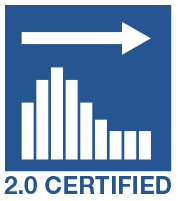Case Studies
Documents
 A look at Autobox's forecasting solutions (Annotated)
A look at Autobox's forecasting solutions (Annotated)
| Date added: | 12/16/2011 |
| Date modified: | 02/15/2012 |
| Filesize: | 139.66 kB |
| Downloads: | 3351 |
Annotated Output: We have added some description of what is going on during the modeling steps. This gives the user more insight into what exactly is going on in the modeling process. The annotations are in RED.
 Oak Ridge National Laboratory forecasting solution
Oak Ridge National Laboratory forecasting solution
| Date added: | 01/06/2012 |
| Date modified: | 01/06/2012 |
| Filesize: | 465.45 kB |
| Downloads: | 3387 |
Business Problem: The detection of release events in the annual growth increments of trees has become a central and widely applied method for reconstructing the disturbance history of forests. While numerous approaches have been developed for identifying release events, the preponderance of these methods relies on running means that compare the percent change in growth rates.
 Carreker forecasting solution
Carreker forecasting solution
| Date added: | 01/06/2012 |
| Date modified: | 01/06/2012 |
| Filesize: | 71.05 kB |
| Downloads: | 3446 |
Business Problem: Provide systems to banks to estimate required cash at ATM/MAC machines The need for accurate forecasts for Automated Teller Machines is critical so that customer’s can get the cash they need while minimizing the amount of cash at the machine.
 Financial analysis/Fraud Detection using Autobox
Financial analysis/Fraud Detection using Autobox
| Date added: | 01/06/2012 |
| Date modified: | 02/15/2012 |
| Filesize: | 475.49 kB |
| Downloads: | 3542 |
Case Study: International Symposium on Forecasting 2002 presentation on the use of Autobox as a fraud detection mechanism.
 A look at Autobox's forecasting solutions
A look at Autobox's forecasting solutions
| Date added: | 12/16/2011 |
| Date modified: | 02/15/2012 |
| Filesize: | 145.25 kB |
| Downloads: | 3659 |
Business Problem: Consider a case where we only have 4 readings with each one taken an hour apart. By using data at each minute we are able to increase our sample size to 240. We are not increasing the number of samples, but the statistical calculation is done as if we have, and so the number of degrees of freedom for the significance test is incorrectly increased and a spurious conclusion is reached. This is one of primary causes of "spurious correlation".






